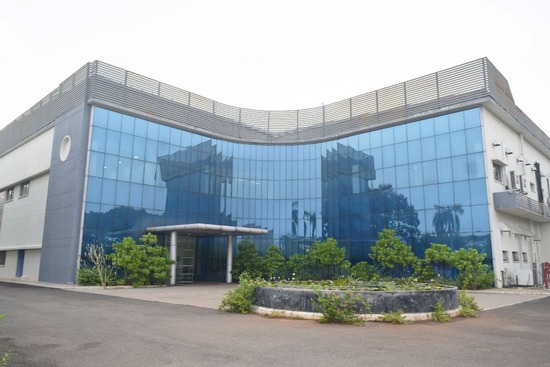
Polymatech Rolls Out Made In India Semiconductor Chips
Polymatech, India’s first and foremost semiconductor chip manufacturer powered by Japanese technology has kickstarted the production of its Opto-semiconductors and memory modules.
At present, the company’s main manufacturing plant in Kancheepuram, Tamil Nadu manufactures 400,000 chips everyday and these have already been released into the market. Within the next few months, Polymatech aims to attain its full capacity of manufacturing 1 million per day (300 million chips per annum).
This manufacturing rollout comes at the heels of the company’s July announcement about massive business expansion and investments to the tune of US$1 billion in semiconductor chips manufacturing. Opto-semiconductors are used in lighting, medical and food sanitisation applications.
Polymatech has completely packaged Op HTCC (High Temperature Co-fired Ceramic substrates) to-Semiconductors in both HTCC and COBs. Both, HTCC (High Temperature Co-fired Ceramic substrates) and COB (Chip on Board) all are wholly conceived, designed and developed by Polymatech and these are closed Tools. COBs are packed for High Power Lighting applications used for Stadium Lighting, Port Lighting, Airport Lighting, etc. while opto-semiconductors packed in HTCC substrates are used in Air Crafts, Metro Trains, Mining Stations and Traffic Lights etc.
Further, UVa chips that are in manufacturing are used in medical and food sanitisation applications. Memory modules that are in manufacturing at Polymatech form an integral part of all major electronic systems.
Eswara Rao Nandam – Founding President, Polymatech, spoke about this latest development and said, “We are thrilled to be announcing the full-fledged rollout of production for our Opto-semiconductors and memory modules. Our Optos give more than 97 percent CRI (Color Rendering Index).
By 2029, the global semiconductor industry market size is predicted to be US$ 1,340 billion and the Indian market will form a significant portion of this industry with a projected growth of US$64 billion by 2026. This, coupled with the ongoing worldwide chip shortage, makes for immense growth potential. We at Polymatech aim to leverage this global opportunity to the fullest and become one of the largest chip manufacturers in Asia by 2025.”
In addition to Opto-semiconductors and memory modules, Polymatech is also in the final stages of production trials for semiconductor chips that will have medical and general applications. Their sprawling 150,000 sqft semicon manufacturing facility in Tamil Nadu will play a significant role in this.
This state-of-the-art facility, in which temperature and RH-controlled clean rooms have been made ready and equipped with machinery that was imported from Japan, has adopted a full-fledged Industry 4.0 theme. The company is also working on forward and backward integration of current products and indigenization of products that are manufactured.
What You Missed:
Vietnam Exports Robotic Surgery Techniques To The Philippines
Fastener Fair Global 2023 Testifies Importance Of The International Fastener And Fixing Sector
Lithium Price Drop Could Boost Electric Vehicle Sales
TIMTOS 2023 Attracts Global Attention At Opening
Taiwan Takisawa Marks 50 Years At TIMTOS 2023 With Green Smart Machinery
Apple Reshuffles Management Team To Focus More On India
TSMC New US Fab May Wind Up With More Issues
CERATIZIT New Water Jet Nozzle Portfolio
EV Price Wars By Tesla And BYD Sends Chinese Auto Stocks Nosediving
TSMC Founder Supports US Efforts To Slow China Chip Advances
WANT MORE INSIDER NEWS? SUBSCRIBE TO OUR DIGITAL MAGAZINE NOW!
CONNECT WITH US: LinkedIn, Facebook, Twitter
Letter to the Editor
Do you have an opinion about this story? Do you have some thoughts you’d like to share with our readers? APMEN News would love to hear from you!
Email your letter to the Editorial Team at [email protected]
